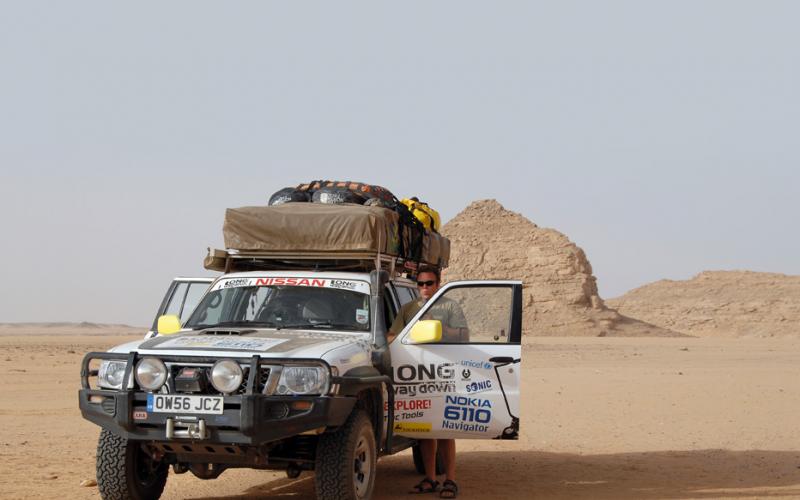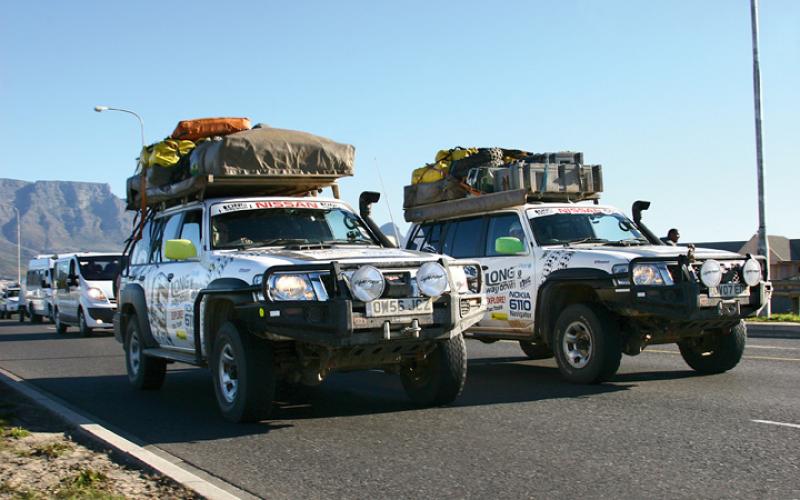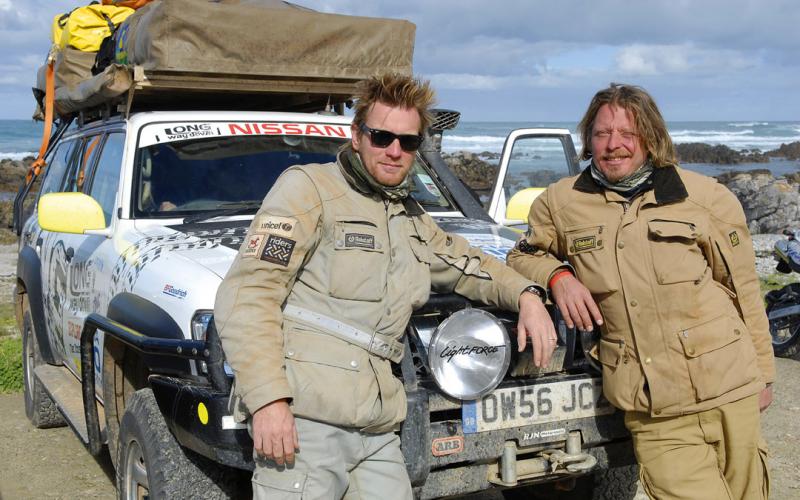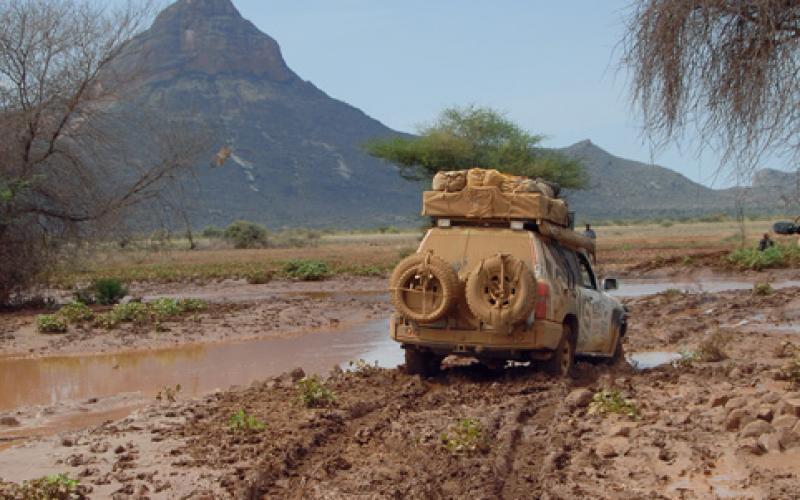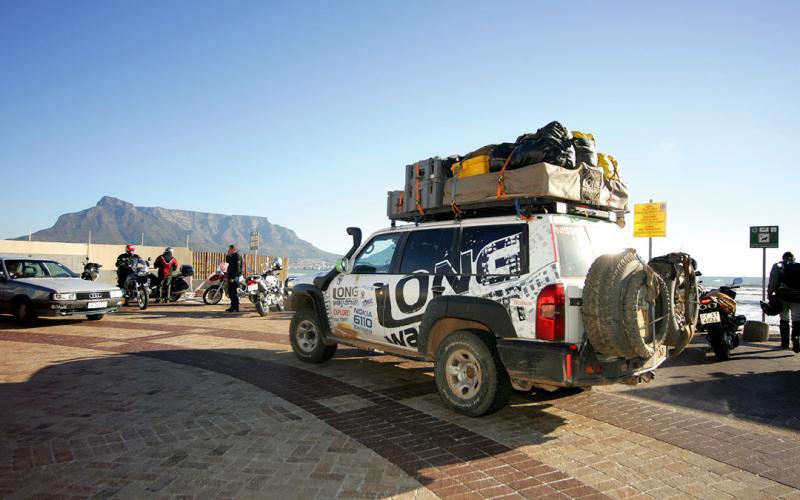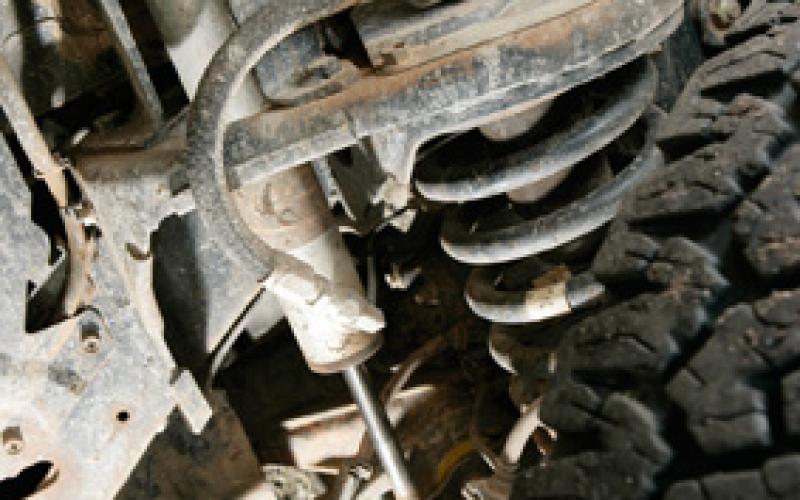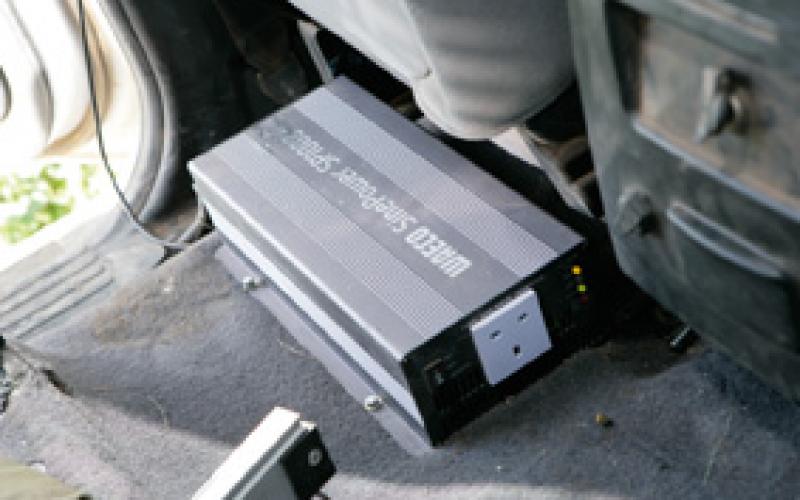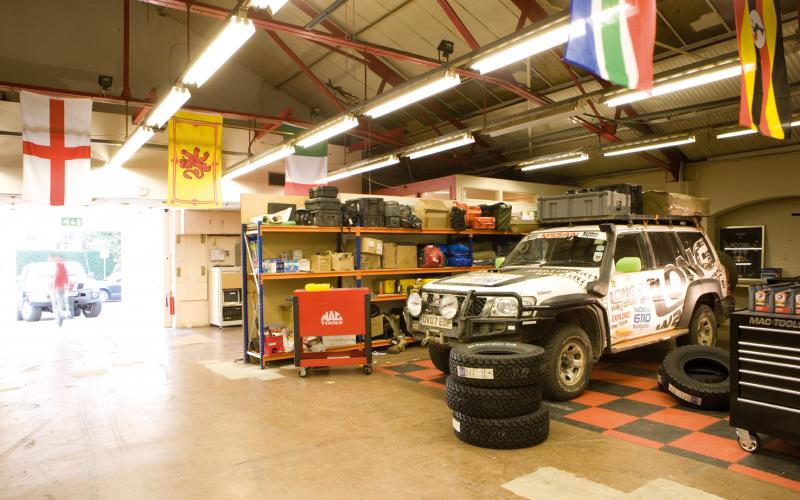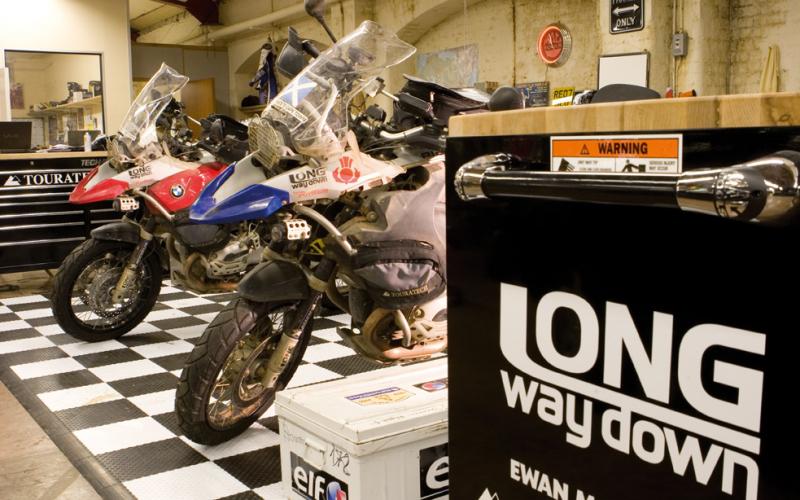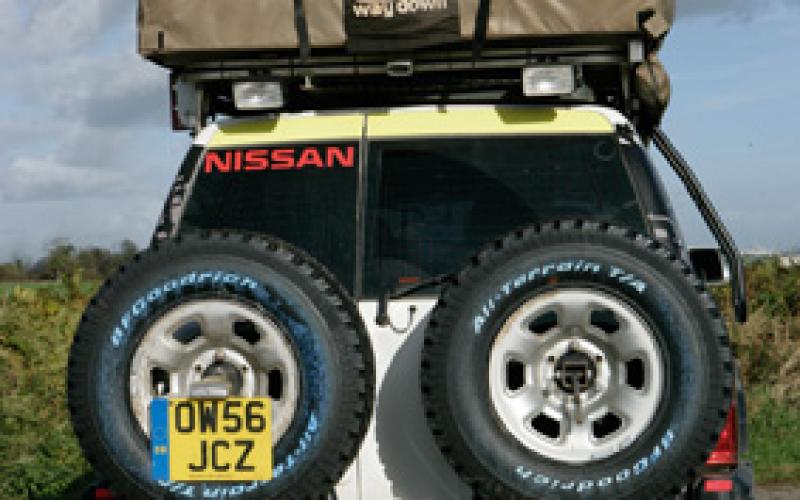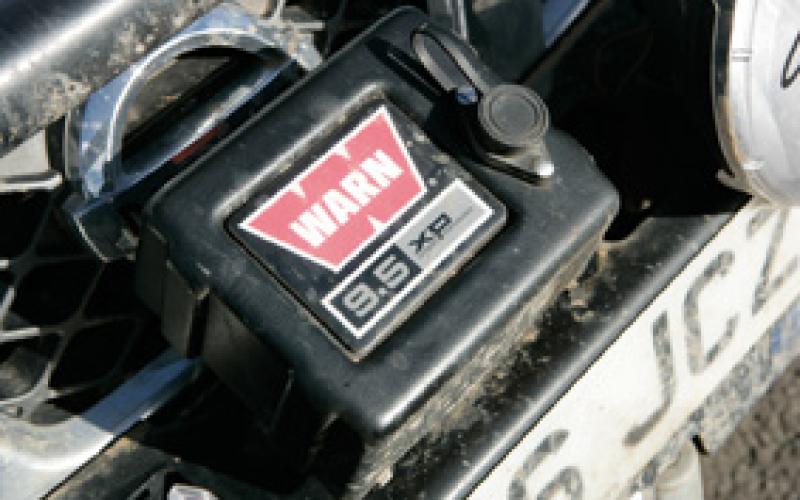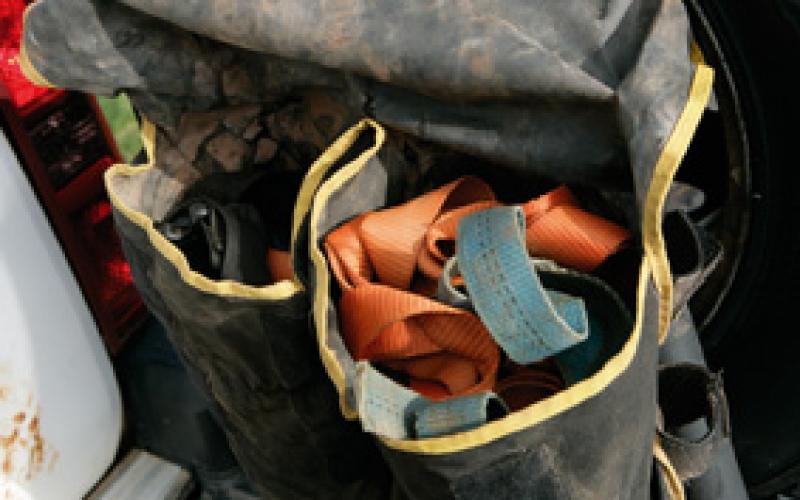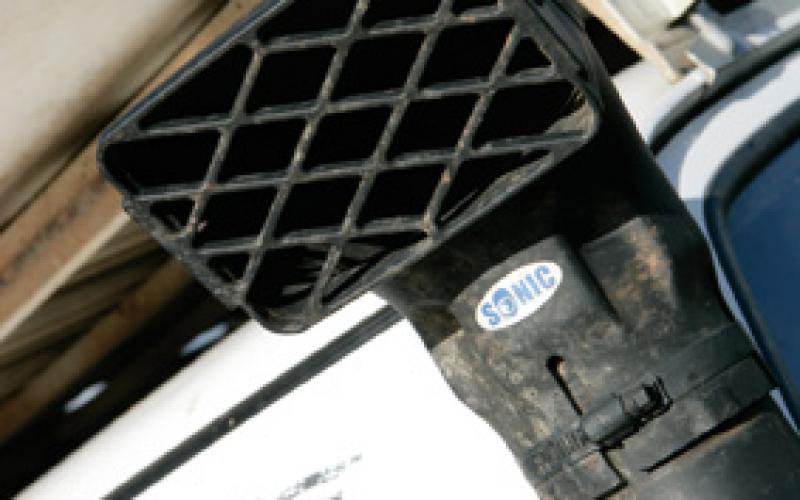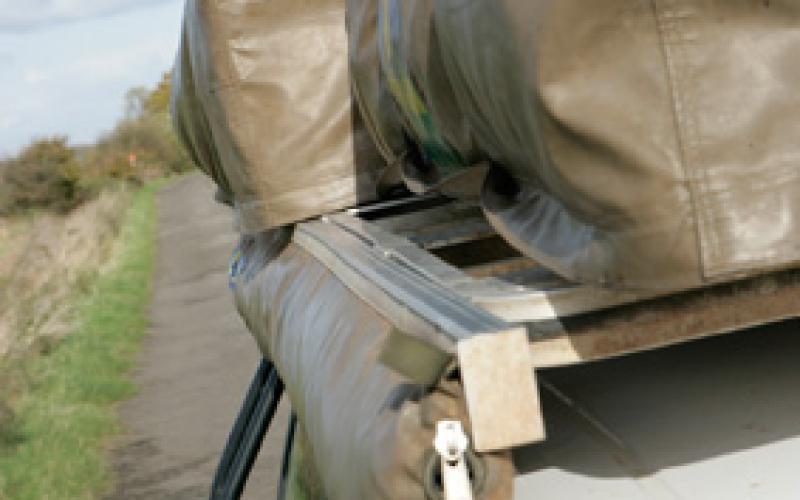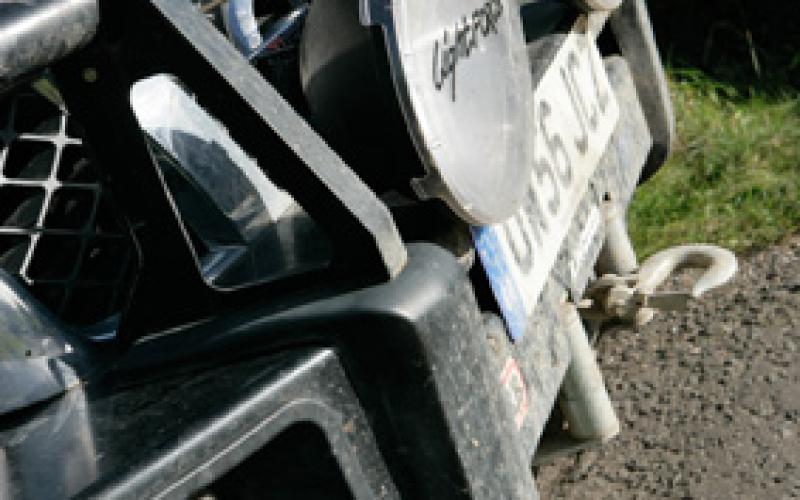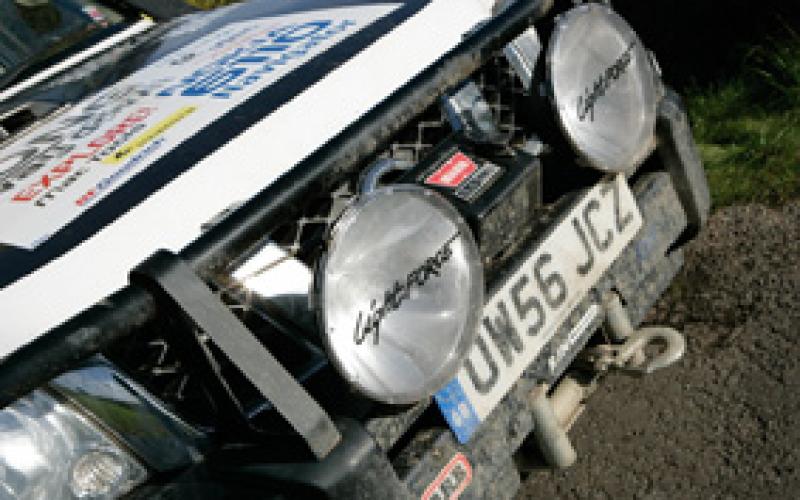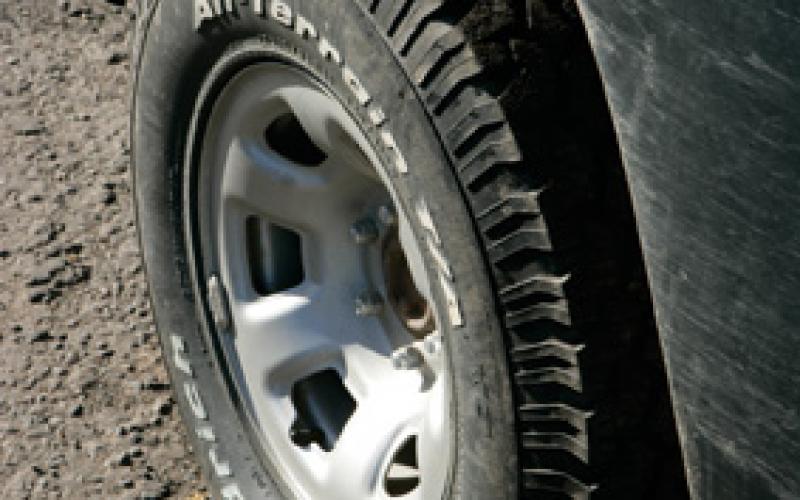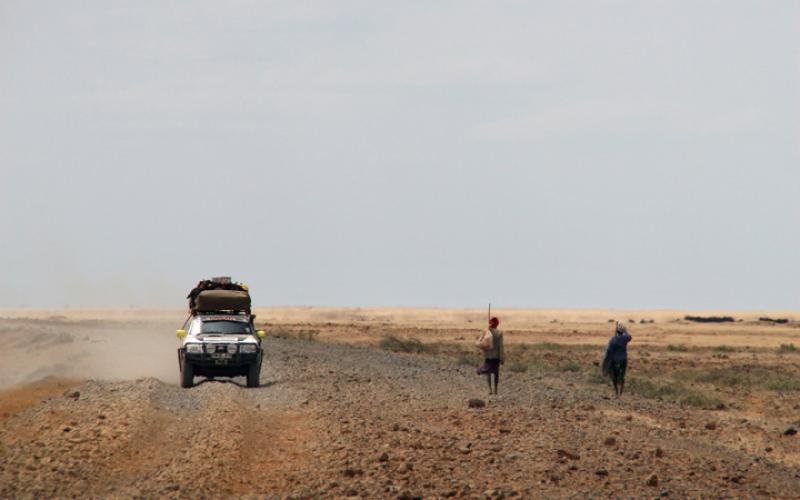Driving South
Behind the scenes of the Long Way Down TV series, there’s a story of two specially modified Nissan Patrols that were especially designed and built to follow the two motorcyclists wherever they went along the three-month, John O’Groats to Cape Town journey. We speak to the show’s producers and the vehicles’ technicians to understand exactly how you prepare for a 15,000 mile expedition through some of the world’s toughest regions.
It’s likely that the average viewer of the Long Way Down TV series will probably regard the programme’s stars, Ewan McGregor and Charley Boorman, with a mixture of admiration and envy.
Undoubtedly, travelling over 15,000 miles from John O’Groats to Cape Town on a motorbike takes a huge amount of determination, courage and hardwork, though behind the scenes just as much effort is required from the camera crews, support staff and the people responsible for prepping the vehicles that make filming such an adventure possible. As the show’s producer, Russ Malkin told TOR, ‘We were not only under the microscope of the BBC website, but with a DVD, book and TV series all resting on our progress, the vehicle had to keep going.’
So when you’re planning on journeying from Scotland to South Africa, passing through 18 different countries en route, many even without roads and all while carrying a large amount of equipment, it soon becomes apparent that a big, strong vehicle is required. With Nissan coming aboard, the Pathfinder was briefly considered until it was quickly decided that the larger, more rugged Patrol was far more appropriate to the task.
As such, two brand new white Patrols were sent out to Oxfordshire-based specialists RJN Motorsport to begin their preparation process. Although the company largely builds circuit racing cars it also has valuable experience in producing both racing and support vehicles for the Dakar Rally, many of which have been Patrols. ‘We already had a good understanding with regard to what would work,’ says the company’s Managing Director, Bob Neville. ‘One of the main alterations we decided on was the stripping out of the second row of seats to replace these with a single front seat, taken from another vehicle. This not only created a lot more storage space but also gave the single backseat passenger far more comfort, and proved very popular with the Long Way Down boys.’
However, as RJN has had little experience of producing expedition vehicles, the company decided to commission Frogs Island 4x4 to carry out the majority of the work. Ironically, back in 2004, Frogs Island was also asked to prepare modded off-roaders for the Long Way Round, the preceding TV series, though as the company was given only nine days to carry out the work, the estimated cost was way in excess of the producers’ budget. On this occasion though, the company was given more time, though the company’s Managing Director, Eddie Priscott, still describes the job as ‘a matter of weeks, not months.’
Summarising the objectives of the build as ‘ensuring the vehicle could drive for long distances with all the means of recovery available to its crew,’ Eddie suggests that the initial modifications carried out by his three-man team were fairly obvious. A 150-litre long-range fuel tank was fitted to each vehicle, along with a 250lb winch and a winch bumper bull bar.
Although Eddie was responsible for outlining the vehicle’s specifications, the Long Way Down’s own specialist mechanic, Jim Foster, visited the workshop to communicate exactly what the TV crew required. An early specification that was expressed to RJN was for the vehicle not to have a roll cage. ‘Weight was always going to be an issue with a vehicle carrying so much gear,’ says Bob. ‘In this particular event speed wasn’t a huge factor, unlike the Dakar, so it was felt that the vehicles’ chances of rolling were fairly minimal. Also, the camera crew wanted to be easily able to get in and out of the vehicles.’
According to Eddie, the Long Way Down team also knew what they wanted in the way of storage space and equipment, specifying the roof tent, cargo and roof netting, along with two fridges, one for carrying food and drink, the other for medical supplies. The crew were also keen to be easily able to access the vehicle’s roof, not only to retrieve items from the roof racks but also to gain a high position for filming. As the Frogs Island 4x4 team had fitted a twin spare wheel carrier to the vehicles’ rear, the specially built lightweight ladders were fitted to the sides.
Another crucial modification for the crew was the inclusion of a 240-volt inverter in each of the vehicles, which were used to power an extensive range of filming equipment, laptops and, perhaps rather bizarrely, Russ Malkin’s keyboard!
Although Eddie suggests that electronics are nearly always the trickiest and most time consuming part of a job, for him the most difficult aspect of the project was the process of ‘tying up the expectations of the Long Way Down organisation through RJN, to us.’ He soon discovered that the TV industry has a very different understanding of timescale to the rest of the world, and jokes about the producers not understanding why a 60-hour job couldn’t be completed in 24-hours. Another difficulty the Frogs Island team faced was the constant interruption of vehicles being taken away for photoshoots, training and filming while the preparations were still being carried out.
A consequence of this was that the team ended up racing against the clock, working late nights and having parts specially flown in from Australia. With just one night before the crew were due to head to John O’Groats, the Frogs Island team were actually in the TV studio, fitting under-floor safes to the vehicles. However, it was all completed just in time with a company called Motor Mode adding the finishing touches in the form of the vehicles’ unique decals.
With the expedition heading off on the morning of May 12th, the immense quality of the Patrols was to be proven over the following three months, with the vehicles providing very few problems.
‘We wanted to start off with the best vehicle we could take, which is why we had the Nissan Patrol,’ explains Russ Malkin. ‘The only problem we had was that at one point in Libya the car lost power, so I tried ringing around places for some advice. I even phoned the RAC centre in Swindon and got through to a guy who said he’d come out and take a look. When he asked me where I was, he sounded a little surprised when I answered Libya. It turned out that a hose had just slipped off the intercooler, so it wasn’t a problem for long.’
‘They seemed to get tougher and more robust as they continued’, says co-Producer David Alexanian, a testament to the vehicles’ super-machine abilities, especially when you consider they were being driven for long periods in extreme temperatures, in countries where tarmac roads are few and far between. As David points out, the crew had to follow a designated route, ‘there was no other option available to us, we couldn’t just decide to go a different way if we didn’t like the look of something.’ As such, the Patrols were forced to tackle some fairly arduous terrain with thick mud and deep ruts causing the majority of the problems. Late one night after a full day’s driving, Russ managed to completely misjudge a tricky rut and the Patrol ended up nosediving into a metre-deep drop. As the vehicle was heavily loaded with equipment, the roof rack slid forward several inches, though was prevented from becoming completely detached and smashing the windscreen by the Frogs Island-fitted ladder – proof of the company’s high-quality build!
The front winches also proved to be a valuable accessory, not only by pulling the Patrols across a sticky riverbed in Kenya, but also when the crews became a little over-excited when seeing the Skeleton Coast of Namibia and headed too close to the sea, becoming stuck in thick mud. Looking around for a winch point, the area was completely barren with the exception of a small toilet block that happened to be just a few yards ahead. Fixing a strop around the building, the first vehicle was attempting to winch itself free when the whole block fell to the ground (Dave assures me the TV company will pay for the damage just as soon as they discover who the property belonged to). Eventually, after digging for over two hours and using a combination of winch power and sand ladders, the Patrols managed to pull each other free - proving why it’s always better to have two vehicles instead of one.
Of course, such difficulties are always part of any foreign off-road expedition and in order to be able to cope in such situations, the TV crews had been sent on an extreme training course, unlike in the case of the Long Way Round when they were simply handed the keys to a modified Mitsubishi L200 and Shogun on the first day of filming. However, Dave admits this preparation probably still wasn’t quite sufficient. ‘The focus had to be facilitating the journey of Ewan and Charley, so time had to be prioritised towards this.’
As the crews were on the road almost continuously throughout the expedition, with no rest days fixed into their schedules, there wasn’t any time to plan where to stay for the night. Occasionally they managed to book into a hotel, though for the majority of the time it was simply a case of pulling off-road and driving through bushes to find a suitable camping spot. Although this may sound particularly dangerous, the entire team were surprised at how warmly received they were in all regions; though in both Egypt and Libya the team was assigned a government official or ‘minder,’ while a route had to be carefully planned through the recent conflict zone of Darfur.
Aside from occasional problems with dust blocking air and fuel filters, the only substantial problem that occurred was the breaking of the Radflo shock absorbers specified by RJN. The general diagnosis of the problem was that the red polyurethane bushes were too hard for such sustained use and crumbled and fell out. This left the shock absorber rattling around, which put such strain on the dampers that the shocks also quickly fell to pieces. However, a simple solution was at hand, with Frogs Island 4x4 ordering some Old Man Emu replacements and having them sent out the following day.
With the team able to continue the journey, from southern Sudan they were soon experiencing the beautiful, mountainous landscapes of Ethiopia, which proved to be one of the highlights of the trip. Other memorable experiences were meeting Rwandan President, Paul Kagame, coming across a tribe of gorillas and of course, the moment when they reached Ewan and Charley in Cape Town, when not only the endurance of the riders and production team was rewarded, but also the hardwork of the Nissan Patrols’ builders.
In spite of this though, Russ also likes to claim his own part in his vehicle’s success, as in Malawi he came across a carved wooden voodoo-inspired sprite called a ‘tokoloshe’ and placed this on the Patrol’s front end to ward off evil spirits. Apparently people are so scared of the ‘tokoloshe’ they wouldn’t even attempt to steal from the car, even if it contained millions of pounds. It is perhaps such cultural differences that underline why the Long Way Down expedition is not only edifying and educational, but also so thoroughly entertaining too.
Suspension
- Radflo specialist shock absorbers especially developed for the Dakar Rally (later replaced with Old Man Emu shocks)
- Heavy-duty coil springs
- Special steering dampers
Electronics
- 1000w 240v power inverter
- Second battery tray
- 8 way fuse box
- 12V DIN power sockets
- Deka Intimidator AGM batteries
- Piranha battery management system
- Second battery tray
Wheels
- Cooper ST 285x75x16 tyres
- BF Goodrich AT 285x75x16
Recovery
- ARB rear bumper
- ARB winch bumper bull bar
- Warn 9.5XP winch 90
- 2m tree strop
- 5m strop
- Plasma winch rope
- Reinforced tow hooks
- Hilift jack and mounting kit
- Shovel and mounting kit
- ARB spare wheel carriers
- ARB EZ tyre deflator
- Viair tyre inflation kit
Off-Road & Performance
- ARB side and wing protection bars
- Safari raised air intake
- Raised transmission breather kit
- Long Ranger 145-litre replacement fuel tank
Interior & Storage
- Under floor document security safe
- Waeco 50-litre fridge freezer
- Single front seat second row
- Custom double jerry can holder and steel can
- Front Runner alloy expedition roof rack with eight legs
- 1.4m two-man roof tent
- Custom side ladder
- 18mm plywood deck
- Lashing rail and ten clips
- Cargo netting
- Front Runner 67-litre water tank
- General Ecology water purification system, including tap
- Piranha hot water shower
Lights
- Cibie bumper mounted driving lights
- IPF rear worklight kit
PATROL, ARB BUMPER, WARN 9.5XP, ARB WING BARS, SAFARI SNORKEL, LONG WAY DOWN




